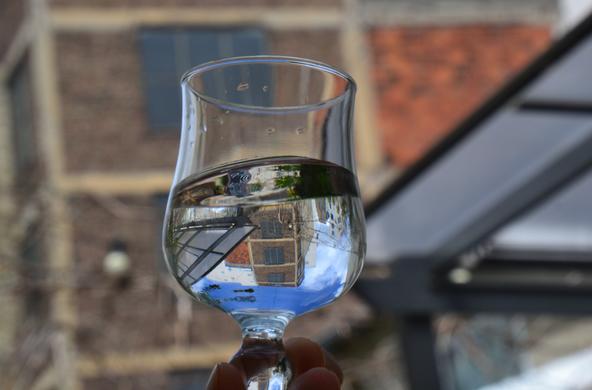Few ecosystems on our planet are as mysterious and misunderstood as groundwater. Despite the fact 60 percent of us in Dutchess County drink groundwater every day, and all of us eat food irrigated by ground water, very few people know where it comes from, where it goes, or that groundwater is full of life. Because we are so misinformed about groundwater, we don't always manage this valuable resource wisely.
All groundwater originates as rainwater or snowmelt that soaks into the ground. Although people might imagine rushing underground rivers, groundwater typically trickles slowly between grains of sand or through cracks in the bedrock. Only in areas of limestone rock, where caves are common, does groundwater often flow through underground stream channels.
Where water in a river or creek might travel five or 10 miles in a day, daily groundwater flow is measured in inches to feet. This means deep groundwaters may have originated from snow that fell when mastodons roamed North America. It also means if we overpump or pollute groundwater, it may take many centuries for the pollution to be flushed away, or the aquifer to refill.
The fact the groundwater we drink has to run through our yards, fields and roadways before reaching our wells ought to make us very careful about how we treat the landscape. Some pollutants are held tightly in the soil or destroyed by soil bacteria before they reach our wells, but other pollutants travel unchanged to our wells.
Watch What You Put On Lawn
The short lesson: Don't put something on your lawn or field that you wouldn't want coming out of the tap you or your grandchildren will drink from. Here in the Northeast, our groundwater is commonly contaminated by excessive salt (from road salt), gasoline from leaky storage tanks, nitrate (from sewage and fertilizers), or industrial chemicals such as the tetrachloroethene that has contaminated wells in southern Dutchess. Once contaminated, groundwater is difficult to clean up, and it's usually expensive and awkward to find alternative sources of water to replace contaminated wells.
Just as water flows into the ground from the surface, groundwater emerges back at the surface in the form of springs or seeps. This groundwater supplies most of the water that flows in our streams during dry periods - this is why streams continue to flow for a long time after the last rain.
Because deep groundwater is around the average annual temperature, these inputs keep streams cool enough to support trout through the summer and warm enough to keep from freezing during the winter. If we pump too much groundwater from our wells, the water table will drop, and springs and small streams will dry up and disappear. This has already happened over large areas of the Great Plains and arid West as a result of excessive pumping. So groundwater and surface waters (streams, lakes) are not separate, but part of a single hydrologic system.
Perhaps most surprising, ground-water isn't sterile, but is full of life. Groundwater near the Earth's surface or in limestone bedrock contain a rich variety of special animals that do not occur in surface waters, including tiny crustaceans, worms and snails; there is even a tiny blind catfish named Satan in Texas aquifers.
Deeper groundwaters contain only bacteria, but these bacteria can live at extraordinary depths and survive under remarkably inhospitable conditions. Scientists have found specialized bacteria as deep as three miles below the Earth's surface, living happily at 140 degrees Fahrenheit without any oxygen, and we don't yet know how deep the groundwater ecosystem extends.
Groundwater is both an extraordinarily valuable resource and a fascinating ecosystem, a familiar part of our everyday life and a dark place with inhabitants scarcely known to us. Better knowledge of this ecosystem and careful planning will preserve this valuable resource for future generations.






